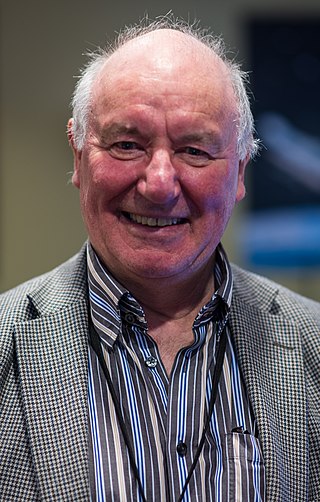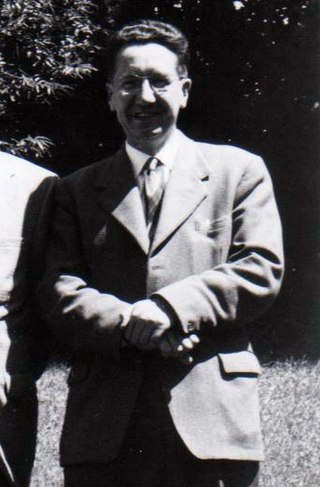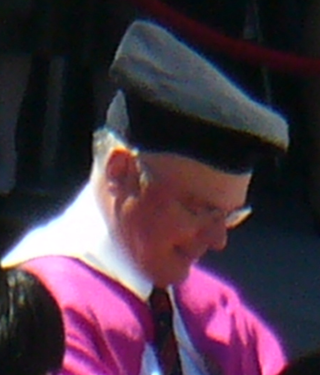Related Research Articles

Malcolm Sim Longair is a British physicist. From 1991 to 2008 he was the Jacksonian Professor of Natural Philosophy in the Cavendish Laboratory at the University of Cambridge. Since 2016 he has been Editor-in-Chief of the Biographical Memoirs of Fellows of the Royal Society.
Sir John Peebles Arbuthnott, PPRSE, FRCPSG, FMedSci, FRCPath was a Scottish microbiologist who was Principal of the University of Strathclyde. He succeeded Lord Wilson of Tillyorn as President of The Royal Society of Edinburgh in October 2011 and was succeeded by Dame Jocelyn Bell Burnell in October 2014.
Sir John Harrison Burnett was a British botanist and mycologist, who served as the principal and vice chancellor of Edinburgh University from 1979 to 1987.

Rev Matthew Black was a Scottish minister and biblical scholar. He was the first editor of the journal, New Testament Studies.
Prof Ian Naismith Sneddon FRS FRSE FIMA OBE was a Scottish mathematician who worked on analysis and applied mathematics.
Sir John William Atwell CBE PRSE FREng FIMechE was a Scottish engineer.

David A. B. Miller is the W. M. Keck Foundation Professor of Electrical Engineering at Stanford University, where he is also a professor of Applied Physics by courtesy. His research interests include the use of optics in switching, interconnection, communications, computing, and sensing systems, physics and applications of quantum well optics and optoelectronics, and fundamental features and limits for optics and nanophotonics in communications and information processing.
William Whigham Fletcher was a Scottish biologist and academic author. He was Professor of Botany at Strathclyde University. He specialised in crop protection and was one of the first to study the environmental impact of herbicides.
Prof Thomas Gibson FRSE (1915-1993) was an eminent Scottish plastic surgeon serving as Professor of Plastic Surgery and Bioengineering at Strathclyde University. Together with Robert Kenedi he cofounding the Bioengineering Department in 1961. His research forms the basis for modern tissue transplantation techniques. In 1960 Sir Peter Medawar wrote to Gibson giving "deep obligation" to him for paving the way for his understanding which led to Medawar being awarded the Nobel prize for Medicine in 1960. His letter ended "thank God I was lucky enough to team up with you".
Dr Peter Joseph Heald FRSE was a British biochemist, who was an expert on reproductive biochemistry.
Douglas Mackay Henderson CBE FRSE FLS was a Scottish botanist, the 12th Regius Keeper of the Royal Botanic Garden Edinburgh from 1970 to 1987.
Prof Robert Maximilian Kenedi FRSE (1921-1998) was a Hungarian-born engineer and bioengineer.
Suresh Chand Jain was an Indian physicist and director of the Defence Research and Development Organization. Known for his research in solid state physics, Jain was an elected fellow of the Indian National Science Academy and National Academy of Sciences, India. In 1966, the Council of Scientific and Industrial Research, the apex agency of the Government of India for scientific research, awarded him the Shanti Swarup Bhatnagar Prize for Science and Technology, one of the highest Indian science awards for his contributions to physical sciences.
Douglas MacLean Clark MacEwan FRSE (1917–2000) was a Scottish physicist and x-ray crystallographer.
Patrick Dunbar Ritchie FRSE FRSC FPRI LLD (1907–1981) was a 20th-century British chemist of Scots descent. Apart from being a noted chemist, he was an artist, fine art conservator, philatelist, ornithologist and mountaineer. His friends knew him as Pat Ritchie.
James Duncan Robertson FRSE FIB FZS was a 20th century Scottish zoologist.
John Walker Sharpe FRSE FIP (1916–1997) was a 20th-century Scottish physicist specialising in the electron microscope.
Prof Donald Cecil Pack CBE FRSE FEIS FIMA (1920–2016) was a 20th-century British mathematician who worked on supersonic airflows. He was one of the persons responsible for Strathclyde University receiving its university status and was its Vice Principal 1968 to 1972. He was one of the first to study the science associated with the sound barrier. In 1964 he was a joint founder of the Institute of Mathematics and its Applications (IMA).
Dr George Trapp FRSE FRGS FLS FEIS LLB (1906–1996) was a 20th century Scottish academic scientist and educator.

Martin D. Dawson FInstP FOSA FIEEE FRSE FRS is a British professor of photonics who is research director of the Institute of Photonics at the University of Strathclyde and is Head of Fraunhofer Centre for Applied Photonics. He has made pioneering contributions in several applied photonics areas.
References
- ↑ "Archived copy" (PDF). Archived from the original (PDF) on 4 March 2016. Retrieved 7 April 2016.
{{cite web}}: CS1 maint: archived copy as title (link) - ↑ "Archived copy" (PDF). Archived from the original (PDF) on 24 January 2012. Retrieved 7 April 2016.
{{cite web}}: CS1 maint: archived copy as title (link) - ↑ Glasgow Herald (newspaper) 27 November 1969
- ↑ Biographical Index of Former Fellows of the Royal Society of Edinburgh 1783–2002 (PDF). The Royal Society of Edinburgh. July 2006. ISBN 0-902-198-84-X. Archived from the original (PDF) on 24 January 2013. Retrieved 7 April 2016.